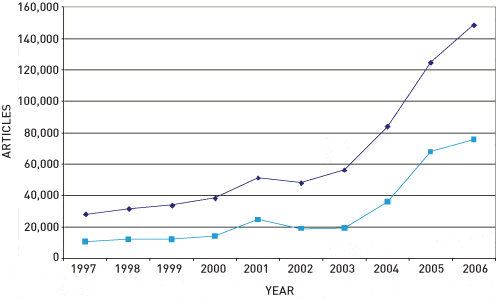China has officially joined the international movement to make research papers free to read.
The National Natural Science Foundation of China (NSFC), one of the country’s major basic-science funding agencies, and the Chinese Academy of Sciences (CAS), which funds and conducts research at more than 100 institutions, have together announced that they will soon make all their papers open access within 12 months of publication. The same thing was discussed in the UK in 2012, but the British don’t really seem determined to move towards open access. However, the USA are taking big strides towards open access journals, and with China stepping in, we can probably expect more countries to join the movement.
In China, this decision would soon make hundreds of thousands more papers open access. China is the biggest growing force in science: while in 2003, 48,000 research papers were published in China (5.6% of the world’s total), in 2012 some 186,000 articles were published (13.9% of the world’s total). Out of these, over half were in one way or another funded by the NSFC, says its president, Wei Yang. (The agency has a US$3.1-billion budget this year.)
“The agencies are studying the selection guidelines to help researchers select open-access journals with reliable quality control and reasonable charges,” he says. “It is strongly felt that there needs to be a balanced mechanism to safeguard the interests of authors and funders in the gold OA market.”
Needless to say, having open access, peer reviewed research articles would do wonders for the growth and popularity of science; however, most science journals are against this kind of development – it would essentially destroy their business model. Still, if you ask me, you have to implement some limitation to the kind of studies which you are opening the access to – I’m talking about a very small fraction of all studies, which have the potential to cause damage – but other than this, I think this would greatly benefit scientists and the general population.
Via Nature.











